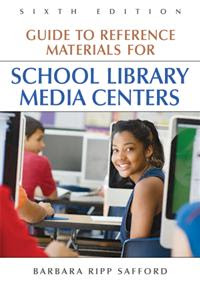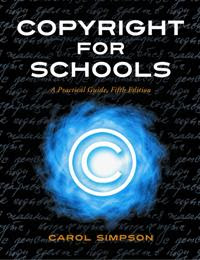
ISBN: 978-1-58683-526-2
Dr. McGhee is a professor at Lewis & Clark College in Portland where she teaches school administrators-to-be. She's been a teacher, principal, and director of professional development and has seen firsthand what can be accomplished in quality school libraries. She teamed with a well-respected practicing school librarian, Barbara Jansen, to craft a clear guide for helping school administrators understand the potential of a strong school library program. (Sound familiar? HB 2586, anyone?) What most excites me about this book is that it reinforces the message that school librarians are trying to spread, but one of the author's has never been a librarian. In other words, this is as equally written from a 'them' perspective as from an 'us' one. Perhaps school administrators will be more interested in hearing the message from a different voice. -- Jen
Publisher's Description
"This book of best practices documents how school administrators and librarians can work together to optimize their library media services.
The principal and the librarian or media specialist at every K-12 school should be a 'dynamic duo' who share the goal of creating a library media program that benefits the learning lives of both students and teachers. Achieving that objective, however, is often more difficult than imagined, eluding many best-intentioned efforts.
A campus administrator looking to improve an existing library media program or create a new one. A teacher or librarian seeking the principal's support for establishing a more effective program. A university professor requiring the foundation for a curriculum to instruct preservice librarians and campus administrators. In each of these scenarios, The Principal's Guide to a Powerful Library Media Program can provide relevant background information, clear guidance, and tangible techniques.
This unique text draws on professional literature, research, site visits, interviews, and the coauthors' collective years of experience to help principals be effective practioners, and to facilitate full comprehension of the far-reaching benefits a successful library media program has on the entire campus. The anecdotes and insights on best practices illustrate the principal's role in managing and facilitating the library media program—including hiring, budgeting, scheduling, and professional development. The methodology of 'GEAR'—Gather information, Establish goals, Apply strategy, and Reflect—is championed throughout the book.
Features
• Includes a collection of practical tools, such as a library walkabout description and form, a list of administrative enablers and inhibitors, GEAR process documentation and worksheets, administrator self-assessments in each chapter, planning paperwork for budgeting, scheduling, staffing, and feedback forms for the administrator and the library media specialist
• Each chapter concludes with a comprehensive list of additional resources
• Contains 13 helpful appendices sections
Highlights
• Combines an overview of the school administrator's role in supporting the teacher or librarian with insightful guidelines for achieving an effective library media program
• Written by two acclaimed experts in the fields of library administration, primary school education, and information-literacy curricula
• Fills a critical information gap regarding the profound importance of library programs, a topic often overlooked in the preservice preparation of most campus and district leaders"
Includes a CD-ROM of self-assessments, worksheets, and other tools found in the book.
































